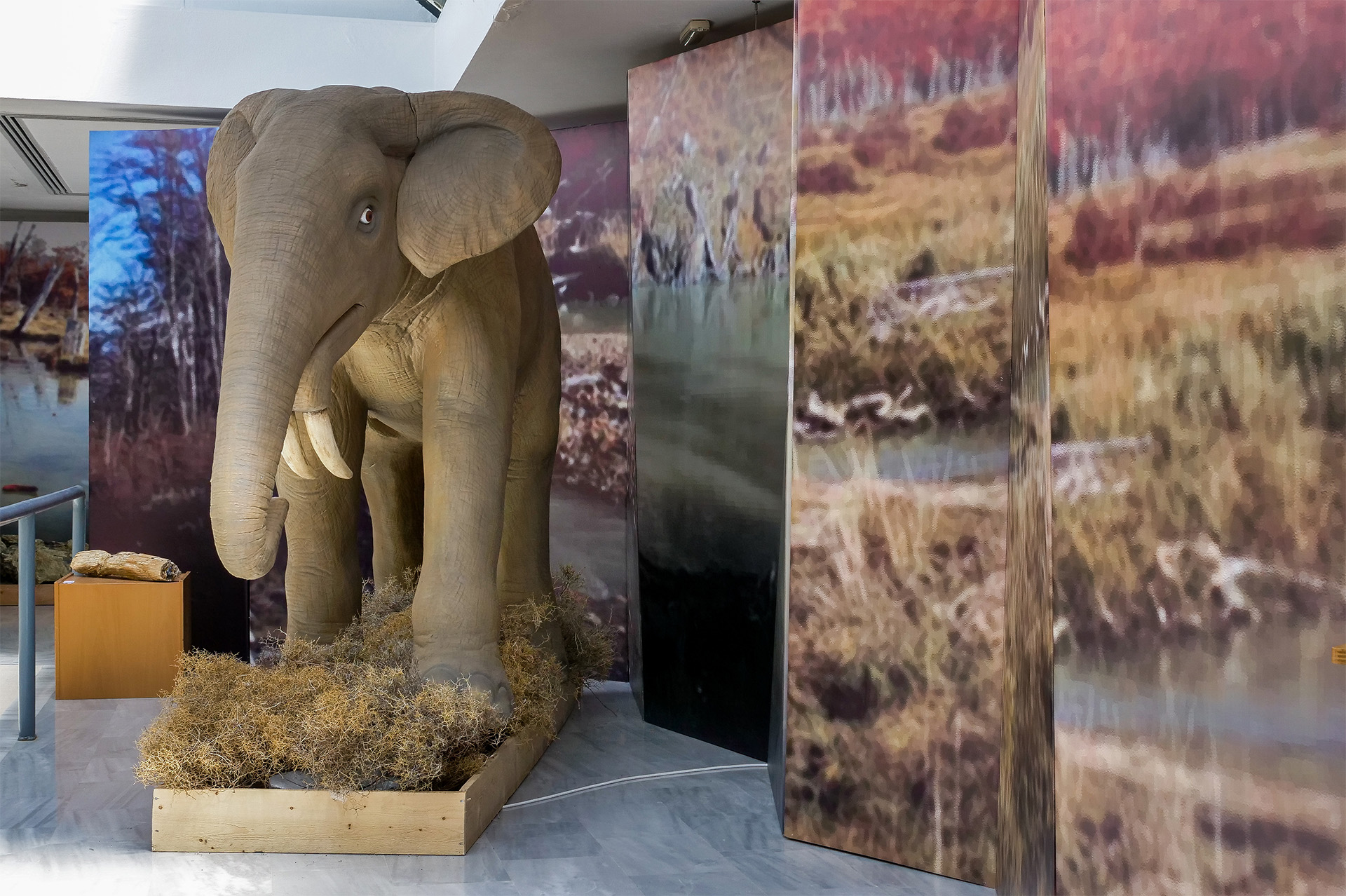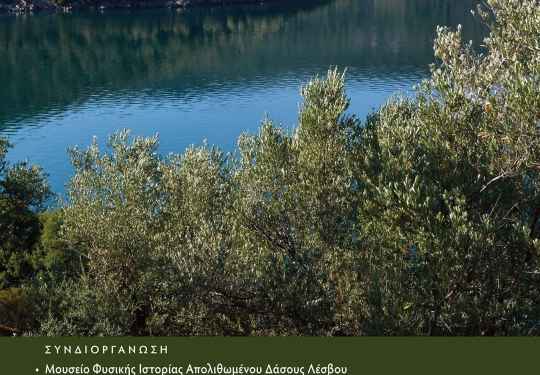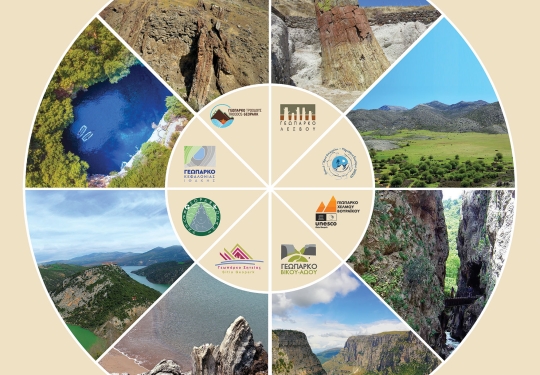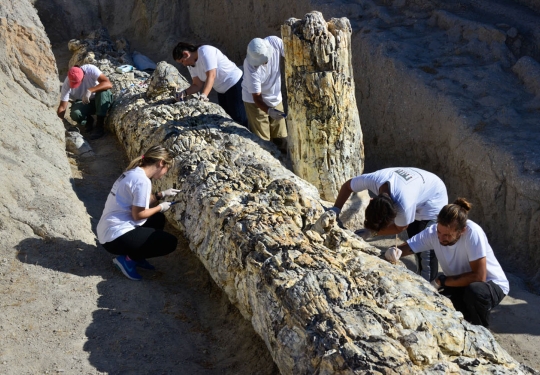Deinotheria and Sequoias
Indicators of climate changes in the Aegean

Exhibition Photos
Other Exhibitions
Offering unique collections and a variety of activities and events, the Natural History Museum of the Lesvos Petrified Forest is always ready to welcome its visitors.
Discovering the Lesvos Petrified Forest, a unique natural monument, is an unforgettable experience.
The Natural History Museum of the Lesvos Petrified Forest is a place of education, knowledge and inspiration. Following the current theory and practices of Museum Education, it designs and implements educational programs for students of all levels of education, children of all ages and families.
The Museum operates the Lesvos Geopark and collaborates with many cultural, educational, research organizations and Museums. It is a founding member of the European and Global Geoparks Network, pioneered in the establishment of the network of the Museums of Lesvos, collaborates with schools and Environmental Education Centers, as well as with a significant number of research centers and universities in the framework of research activities.
The Natural History Museum of the Lesvos Petrified Forest (Greek: Μουσείο Φυσικής Ιστορίας Απολιθωμένου Δάσους Λέσβου) is a geological museum located in the village of Sigri on the island of Lesbos in Greece. Established in 1994, it is a center for the study, management, and preservation of the petrified forest of Lesbos and for public education about the site. It is a founding member of the European Geoparks Network and is a member of UNESCO's Global Geoparks Network.
Impressive fossils from the excavations conducted during 2018-2019 in the Lesvos Petrified Forest, as well as information on plants and animals that lived in Lesvos 19 million years ago.
On Tuesday 3 December 2019 opens the temporary exhibition “Deinotheria and Sequoias: Indicators of climate changes in the Aegean”, organized by the Natural History Museum of the Lesvos Petrifies Forest at the Eugenides Foundation.
The main exhibits of the temporary exhibition “Deinotheria and Sequoias: Indicators of climate changes in the Aegean” are the petrified tree trunks of Sequoias from both the marine and the land part of the Lesvos Petrified Forest and the impressive life size model of the Deinotherium of Lesvos, with movement and sound effects.
Sequoias are the largest trees that lived on earth and are indicators of the continental climate that prevailed in Aegiis 20 million years ago.
The Lesvos Deinotherium is one of the oldest Proboscidean mammal fossils in Greece, 19 million years old. The fossilized lower jawbone and bones of the animal were found at the area of Gavathas and their presence proves the animal’s migration from Africa to Eurasia.
The exhibition also features impressive fossils from the excavations conducted during 2018-2019 in the Lesvos Petrified Forest, as well as information on plants and animals (micro-mammals, reptiles, amphibians and fish) that lived in Lesvos 19 million years ago.
Aim of the exhibition is to introduce the visitors, and especially young people and students, to fossil finds of unique scientific value and to their role as indicators of past climate changes.
The number of fossils that is being revealed in Lesvos, is extremely interesting and important for understanding the major past climate changes and their impacts on ecosystems, that are proved by the presence of specific species that have disappeared or no longer appear in Greece and the wider Mediterranean.
The Eugenides Foundation collaborates and hosts for the fourth consecutive year in its premises the exhibitions organized by the Natural History Museum of the Lesvos Petrified Forest, offering the opportunity to the public of Athens to learn about the efforts of scientists to save fossils and the important research on geological history, ecosystems, biodiversity and climate change, in a valid and at the same time understandable and enjoyable way.
Other Exhibitions
Monday -Sunday: 9.00-17.00
Sigri, Lesvos island, P.C. - 81103
+30 22530 54434
lesvospf@otenet.gr


